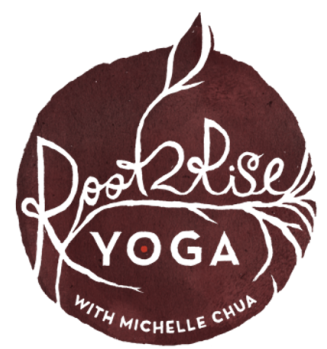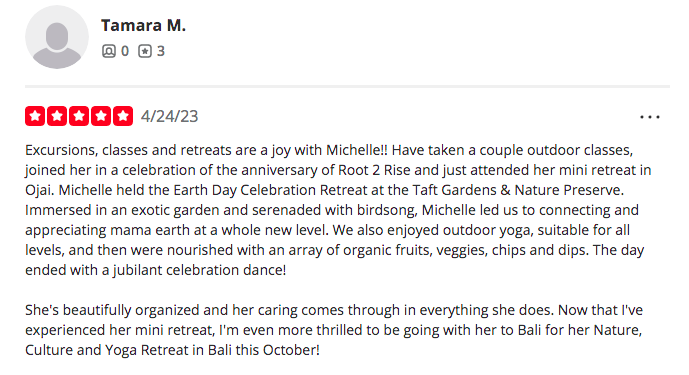|
1. Relieve Stress
Deep breathing and meditation induce the relaxation response of the parasympathetic nervous system, according to Yoga Psychology teacher trainer, Ashley Turner. This shifts the body out of the “fight, flight, collapse or freeze” stress response of the sympathetic nervous system. Yoga postures help to reduce muscle tension, which also deactivates the stress response. Studies, such as one conducted in 1995 at Thomas Jefferson Medical College in Philadelphia, showed a decrease in the stress hormone, cortisol, after practicing yoga asana. 2. Boost Immunity According to studies cited in The Journal of Alternative and Complementary Medicine in 2020, yoga with breathwork and meditation demonstrate anti-stress and anti-inflammatory properties. They increase the vagal tone, which regulates the body’s stress response. Thus, stress hormones are lowered. Also, numerous postures, like a sequence of backbends, forward folds and spinal twists, and warming breathwork, like Breath of Fire, or Kapalabhati Pranayama, are geared toward aiding digestion, known as a central component of immune system health. Pranayama conditions the lungs and maximizes breathing capacity, combatting “disturbed irregular habits of breathing” associated with chronic respiratory illnesses that “are directly linked to a weakened immune response,” informed Gary Kraftsow in his book, Yoga for Wellness. 3. Increase Mobility + Flexibility An intelligently sequenced physical practice with mindful breathing, warm-up movement, optimally aligned postures that increasingly deepen stretch in targeted areas of tension and counterbalancing postures within the same antagonist muscle groups help increase mobility and flexibility over time, especially when practiced daily. 4. Improve Posture + Breathing Asanas, or yoga poses, help to realign the major joints in your body facilitating an upright, open and relaxed physical posture. When the chest, neck, shoulders and overall spine are continuously opened in different postures, breath can flow more easily and deeply. 5. Cultivate Steadfastness + Loyalty to Yourself Making a commitment to show up each day to care for your body, breathe through whatever life brings you in the ever-changing moment and sit with your mind to nonjudgmentally watch how it responds to the world cultivate steadfastness and loyalty to yourself, as Mindfulness Teacher Pema Chodron says about meditation. It also strengthens your willpower, making a habit out of following through with self-care, even on days when it’s challenging. 6. Daily Spiritual + Mental Hygiene Witnessing the fluctuating thoughts of the mind in meditation enables the meditator to see past their own mental habits, such as the negative chatter of the inner critic. Just like daily oral hygiene cleans the teeth, or tools of digestion, daily mental hygiene through meditation brings clarity to the mind, or tool of perception. Meditation is a constant opportunity to become aware of and consciously release the accumulation of harmful thought forms. 7. Interrupt Unhealthy Patterns in Body, Breath + Mind Thoughts and emotions are energy and affect the breath and body. For instance, anger can manifest as short quick breaths, a frowning face and tense jaw, neck and shoulders. A constant state of anger can turn these manifestations into a prolonged way of breathing and tensing the body into such a posture. Yoga poses, such chest-expanding backbends, and breathing techniques, such as sustained abdominal breathing, interrupt such patterns and consequently affect the mind’s state. Meditation can create a pause between the stimulus of anger and the physical and mental reaction, offering the meditator a more conscious choice of how to respond. 8. Cultivate Equanimity + Intrinsic Peace Equanimity is the mindfulness quality of gaining a balanced perspective of life circumstances, rather than being pulled into the highs and lows of reactivity. This powerful skill for inner peace develops as a daily meditator is able to discern the impermanence of events, emotions and thoughts, not relying on them as sources of happiness or permanent identity. The ability to breathe evenly and mindfully through yoga postures of varying degrees of comfort and reasonable challenge allows the freedom to choose an inner state of mental-emotional balance. 9. Connect with Your Inner Wisdom Meditation is an intimate meeting with your inner source of wisdom. Physical yoga is attuning with your body’s wisdom. Yogic breathing bridges the wisdom of the mind and body. 10. Strengthen Your Mindfulness Muscle of Nonjudgmental Present-Moment Awareness Paying attention on purpose and without judgment to the present moment to the sensations that arise within a yoga pose, to subtle energetic shifts within a breath practice or to the tendencies of the mind are the practice of mindfulness. Practicing this daily allows accessibility to mindfulness as a ready and familiar tool for other daily events, like eating mindfully, conversing with a friend with loving attention or driving home from work with nonjudgmental perception of other drivers. 11. Develop Daily Tools for Self-Regulation (Grounding + Embodiment) Rather than dissociating with what’s happening in the moment, yoga teaches embodied presence: tuning into the subtler felt sense message of the body. Rather than getting carried away by a reactive chain of thoughts into the past or future, being in the direct present experience of the body empowers a feeling of safety, groundedness and awareness of life as it is happening now. Examples of self-regulation tools from yoga include box breathing, or sama vritti pranayama, restorative yoga poses, forward folds and chanting meditation to self-soothe through resonant sound. 12. Establish a Loving Relationship with Your Body Showing up daily to care for your body on days when you feel energized and inspired and on days when you feel unmotivated reinforces the message that your body’s wellbeing is important to you. Approaching the postures with the yogic quality of balancing effort with ease allows the body to feel nurtured. There becomes a synchronistic dance of communication between your body, mind and spirit that can continue into the rest of your day after your practice. 13. Increase Circulation Mindful breath-led movement through various yoga poses enables circulation of blood, energy and life force, releasing stagnation mentally and physically. Blood flow is reversed and stimulated in inversions, like shoulderstand, or salamba sarvangasana, and restorative legs-up-the-wall, or viparita karani. Spinal twists stimulate the abdominal region, where digestive organs reside, thus increasing blood flow and movement of food in this area. 14. Cultivate Self-Awareness Our habits of doing and being in daily life often show up in our yoga practice, which can become a laboratory of self-study, or svadhyaya. For instance, the tendency to rush from one pose to another may reveal the ways we rush through life experiences. As we experience the effects in the microcosm of physical yoga, we can see parallels in the effects in the macrocosm of our personal lives. Our practice can be a mirror for self-reflection that empowers us to live more consciously. Additionally, as you learn the various traditional limbs of yoga and apply them with integrity and consistency over time, mental habits based on egoic misperceptions that cause suffering, become more apparent for you to release. 15. Build Self-Trust + Confidence Taking consistent action aligned to your core values, presuming it’s in the realm of optimal mental, physical and spiritual health, builds self-trust. The harmony between beliefs and actions experienced when acting with integrity and love-inspired discipline empowers self-confidence. 16. Naturally Regulate Your Energy Different poses and breathing techniques can be skillfully used to either energize or relax the body and mind. A daily practice of various types enables you to build your own practical “inner pharmacy” of natural ways to help regulate your energy throughout the day. 17. Sharpen Your Focus + Increase Productivity Synchronizing your breath and body in vinyasaflows or holding still in an asanafor several breaths requires sustained mental focus. Meditation begins with concentration, practice, or dharana. Directing the breath intentionally requires skillful presence. Throughout the yoga practice, you are training your mind to let go of distractions, through the yogic practice of pratyahara, and to be intentional on what it focuses on and thus directs your energy towards. Applying the same skills off the yoga mat empowers the ability to concentrate and be productive in other tasks. 18. Reduce Anxiety Anxiety is characterized as worrying about the future and not being present. Yoga is a constant practice of being present in your body, breath and mind. As you develop self-awareness and self-regulation tools through yoga, you are also building a toolbox on how to deal with anxiety as it arises. 19. Counteract Depression During yoga, including breathwork and meditation, feel-good hormones, dopamine, norepinephrine and serotonin, are released. Meditation, the process of stepping outside of mental patterns, creates new neuropathways in the brain, increasing patience, empathy and positive thinking, according to Yoga Psychotherapist Ashley Turner. 20. Build Physical Strength + Balance The multitude of yoga poses is bound to reveal imbalances of strength and flexibility in the body. Moreover, their variety—from 4-limbed staff pose, or chaturanga dandasana to warrior 3, or Virabhidrasana3-- require learning to engage different muscle groups to support the health of joints, like within the spine. Balance is also challenged and refined, using different parts of the body as the base of support as an experienced instructor guides you through wisely sequenced poses to help you transfer skills from simpler poses to more challenging ones. 21. Befriend Your Mind + Emotions Body, breath and mind awareness are developed so that over time of consistent practice you can habitually take the seat of wise witnessing presence. Meditation can be used to befriend emotions, not bypassing difficult ones or falling dependent on pleasurable ones. Rather, you can use your emotions as tools for awareness. Through this constant practice of clear seeing, you can bridge the practice of befriending, or having an all-encompassing caring curiosity, onto the ebb and flow of situations that arise throughout the day. These are only 21 of a a multitude of benefits of practicing yoga daily. Meditation is a large aspect of yoga. Read on here to learn what Psychology Today says in their article, 20 Scientific Reasons to Start Meditating Today. Want to start or renew a daily doable yoga practice, with meditation? Check out Daily Yoga Habit, a 28-day kickstart to your personal daily self-care ritual. It's only 10-20 minutes a day at your place and your time and begins on March 21.
4 Comments
Space to See Clearly by Michelle Chua
4/25/2021
Ever feel triggered? It’s that feeling of being hijacked by a strong emotion, such as anger, where a chain reaction of thoughts lead you into reactivity, or impulsive action. Or, when you’re deep in a state of happiness, do you ever suffer from the thought of never wanting to let it go? Perhaps sadness, desperation or obsessiveness creeps into what was a joyful moment.
Equanimity is a powerful tool for regaining inner balance and peace, during whatever high or low part of life’s rollercoaster you are experiencing. Yoga philosophy identifies root causes of human suffering, called kleshas, and are commonly based on mistakenly perceiving that our identity is whatever impermanent state, such as emotions, we’re experiencing and forgetting that life is ever-changing. It includes being constantly driven by our aversions, such as resisting and running away from what we dislike, and our attachments, such as clinging to or continuously running after what gives us pleasure. Both kleshas of aversion and attachment create a lens of dissatisfaction and restlessness. Equanimity is the ability to accept that impermanent highs and lows of life are inevitable and being able to source balance and clear perspective from within to respond to the moment with presence, not reactivity. It’s also important to clarify what equanimity is not. Just because you accept that life happens, it doesn’t mean you have to approve of what’s happening, such as social injustices, or that you should sit back and do nothing, feel nothing. In contrast, it requires a level of emotional intelligence and self-awareness that empowers you to notice when strong emotions begin to arise and to exercise your freedom to choose to pause and not be overcome by their trance. This “space between stimulus and response,” as Viktor Frankl described, “is our power to choose our response,…(wherein) lies our growth and our freedom.” Moreover, unlike indifference or dissociation, equanimity involves recognizing and feeling the strong emotions and expanding your heart’s capacity to include the whole spectrum of human emotions. It also entails understanding any layers of emotions that may sit beneath the surface of the louder emotions. For example, underneath anger may be sadness and hurt. In so doing, you can see yourself and act in the world with nonjudgmental truthfulness and from a compassionate wise heart. It takes courage to look inside yourself honestly before acting outwardly and to act intentionally and wholeheartedly. So how do you develop equanimity? If you are prone to reactivity, as our human brains are wired to have the “fight, flight, freeze or collapse” stress response for survival in the wild, then it takes a shift of perspective. As you understand the value of equanimity for inner and outer harmony and spiritual well being and evolution, you may feel more inspired to invest your energy in strengthening this inner muscle. Daily meditation practices are useful to learn to mindfully observe your emotions and thoughts and allow yourself to feel whatever arises without having to fight or flee from it. Specific guided meditations on dealing with difficult emotions and on befriending varying circumstances you might deem positive or negative can help. Through a well-rounded yoga practice, you can develop self-regulation techniques for soothing your mind and body out of a stress response by using physically grounding postures and movements, conscious breathwork to activate the parasympathetic nervous system and mental focus to stay present in your body even in discomfort. Introspective practices, such as journaling and sharing your personal experiences with a trustworthy witnessing presence, such as a friend or community member, can increase self-awareness and cultivate the habit of identifying emotions and self-inquiry to trust your inner wisdom. Practicing the tool of equanimity when you’re not in the heat of strong emotion can make this skill more accessible and familiar to exercise when you do encounter life’s unexpected circumstances. Finally, equanimity is a worthwhile mindfulness skill to invest your energy in learning. Your direct experience of the inner state of balance it builds can be the most convincing reason to practice it. Its impact can extend beyond small disappointments into tragic situations and can affect not only your well being but those with whom you affect through your presence, especially in times of difficulty when a calm and collected mind is direly needed for decision-making. With an open heart, wise mind and calm body, your skillfulness in equanimity can contribute to balance, peace and harmony in the greater community. Spring Detox: Why + How?
4/1/2021
An Interview with Holistic Health Coach and Living Foods Vegan Chef, Magdalena |
A Collective Blog about Yoga Lifestyle & Inspiration
|
REviews of Root 2 Rise Yoga with Michelle chua:Michelle truly lives out what she teaches. She is so much more than a yoga teacher - I learned this when I went on her exquisitely curated trip that she organized to Costa Rica this past June 2018...Hopefully like me, you'll be delighted by her effervescent love of movement, nature, and all people! Michelle clearly stands out with her beautiful and bright energy. I love how her practice and teaching encompass body, mind and spirit. She not only teaches yoga but lives and exudes it. Michelle not only teaches 'yoga', she embodies it fully with her heart and soul... Michelle is by far one of the best instructors I've ever had, period. Patient, clear in her explanations and demos, and so encouraging... My first yoga class was with Michelle years ago. You can have the best (yoga pose) sequence and not teach from your heart. With Michelle, I also feel her passion when I'm in her class. I can see she loves what she does, and she inspired me to want to teach yoga, too. |
Let's connect:Now offering private reiki sessions for stress relief and healing.
I'm so grateful to have met Michelle! Her kind energy opened up my interest in pursuing yoga and meditation. She is such an incredibly light and soul. She starts with grounding ourselves through mindfulness and breathing exercise. She brings the most authentic energy to the class by sharing the history and understanding behind poses, names, and techniques. I truly appreciate her work and impact on my well-being! I’ve had dozens of instructors over the years, but Michelle is far and away the best yoga mentor I’ve ever practiced with. She epitomizes grace during these difficult times. Michelle has saved my sanity and my back while working from home, keeping me grounded with her sharing of yogic teachings and meditation techniques. Her repertoire of physical asanas is encyclopedic, and I’ve loved learning new poses and stretching my boundaries. Jump in, all. You’ve got this! |
©2010 Root 2 Rise Yoga




 RSS Feed
RSS Feed

